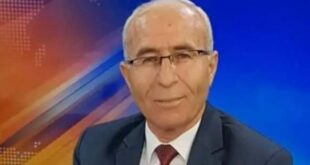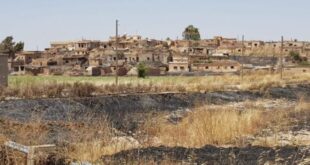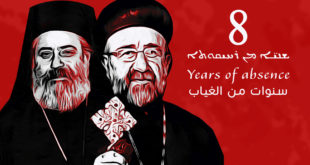By Sammy Ketz – DAMASCUS
ADO-World.org
22-September-2011
As anti-government rallies in Syria appear to lose some of their momentum, protesters may increasingly turn to violence if peaceful action continues to stall, analysts and diplomats believe.
Demonstrators have since mid-March been taking part in a largely non-violent uprising, but the regime of President Bashar al-Assad has carried out a bloody crackdown that has left more than 2,700 people dead and tens of thousands in prison or unaccounted for, according to the United Nations.
"The protests are continuing in Qamishli (northeast), in Daraa (south), Bou Kamal (east), and the Syrian coast, but they are not as large as before," acknowledged Rami Abdel Rahman, the head of the Britain-based Syrian Observatory for Human Rights.
According to him, the decline in the size and breadth of the protests is due to widespread arrests, especially among the ranks of the anti-regime movement’s leadership, and systematic police searches of local communities.
The current situation is a marked departure from July, when protests peaked with massive rallies in Hama and Deir Ezzor, in the north and east of the country respectively, forcing the Syrian army to intervene.
"Both cities were out of the control of the government, and hundreds of thousands would gather on Fridays," Abdel Rahman noted. "Now, in Deir Ezzor, there are just a few thousand."
In the view of Thomas Pierret, a lecturer at the University of Edinburgh, peaceful resistance in Syria did not have its intended impact because of the regime’s willingness to crack down brutally.
"A non-violent strategy works if a significant part of the army is reticent to shoot civilians," he said. "This is not the case in Syria, so one would think the opposition will not bring about the end of the regime peacefully.
"We are now probably in a second phase — a war of attrition. On the one hand, the protests are continuing, albeit on a smaller scale, and on the other hand, in regions such as Homs or Idlib, military deserters and armed demonstrators hold small towns or neighborhoods."
"This is a new test for the unity of the army," said Pierret.
His analysis is a point of view shared by Western diplomats in Damascus.
"The number of demonstrators has diminished, but … if the repression continues, it will become increasingly difficult for proponents of peaceful action to convince the radicals in the protest movement not to take up arms," one diplomat said, speaking on condition of anonymity.
The United States, France and Britain have supported sanctions against Syria in the UN Security Council, but such efforts have been strongly opposed by Russia and China.
Those on the side of the Syrian regime, meanwhile, have expressed satisfaction that attendance at protests is declining, but caution of the danger presented by "armed gangs."
"Last Friday, there were a maximum of 25,000 or 30,000 protesters in all of Syria, a tenth of how many there were in August," said Khalid al-Ahmed, a Syrian consultant who is close to the regime.
"The movement is not finished, but it is on a downward trajectory because the protesters see that the regime is not going to collapse like a house of cards, unlike in Tunisia or Egypt," he added, referring to popular uprisings there that ousted long-time strongmen.
According to Ahmed, the biggest danger now comes from "4,000 armed Salafists who can be found in Jabal al-Zawiya (in the northwest), which is very difficult to access, and 2,000 others hiding in Homs, where street-level combat would be very costly."
"These rebels only know the language of arms."
According to protest organizers, however, the smaller scale of their rallies is a tactical choice, not one forced upon them.
"The demonstrations have not decreased in their intensity," said Omar Idlibi, spokesman for the Local Coordination Committees, which have been organizing the almost daily protests on the ground.
"But we have decided to limit their scope in the places where the regime violently cracked down, and to redeploy them elsewhere.
"Certainly, the military occupation in all the regions is an obstacle, as are the arrests of tens of thousands of people, but the movement continues, and shows the determination of the Syrian people to achieve their goals."
Idlibi, who forcefully argued for the non-violent nature of the protest movement, nevertheless added that the "delay of the international community in clearly supporting the Syrian revolution could lead to a deviation from the peaceful line."
Source: Middle East Online
 Assyrian Democratic Organization ADO
Assyrian Democratic Organization ADO






